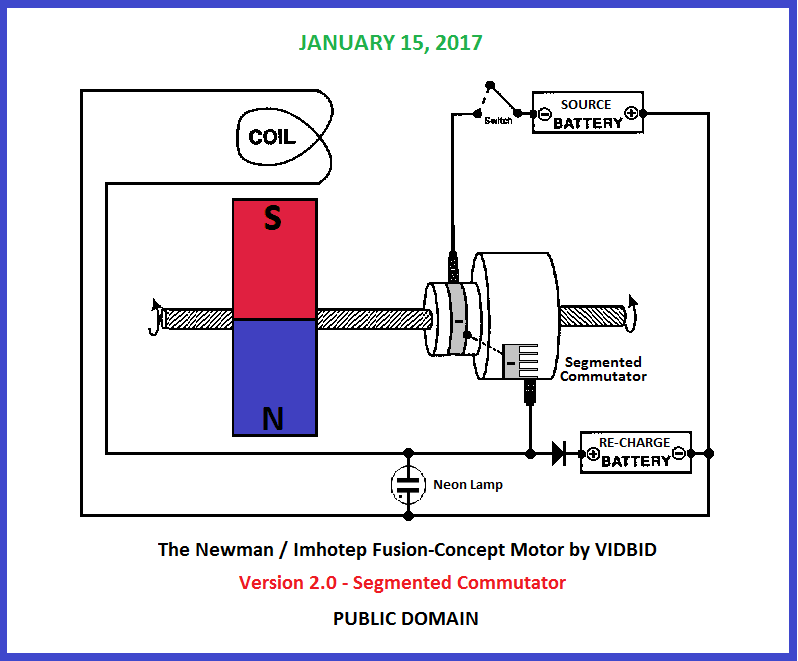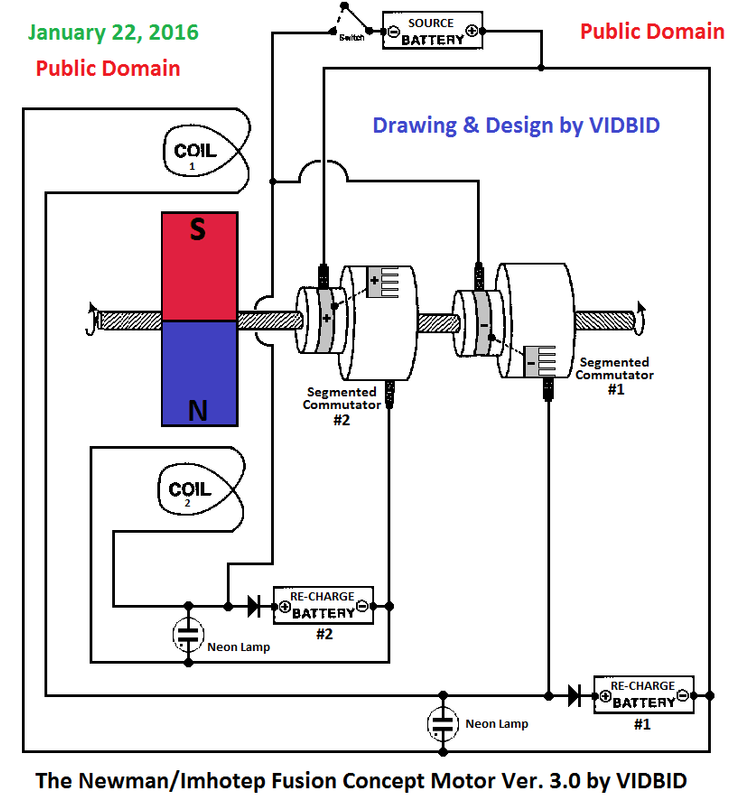Originally posted by Duncan
View Post
I believe WITT's 35-Watt Delay Line Generator is Newman's motor.

The above design is based on Naudin's Newman Motor design with the exception that there is no zero-stating of the coil as referred to by Paul Babcock, and there is a re-charge battery.
It should be said that the way Newman zero-stated the coil was to short it before charging the same, but why do that when the power could be applied to some sort of low-resistance load? For example, the power could be applied to electrolysis of water into oxygen and hydrogen gas.
The flyback from the coil is used to charge the re-charge battery or a series of re-charge batteries.
There are multiple flyback spikes sent to the re-charge battery per revolution because of the segmented commutator.
A number of Newman Motors could be put in series, say four, to start with, with each succeeding rotor angle offset by 90 degrees. The mechanical output could be used to power a generator.




Comment